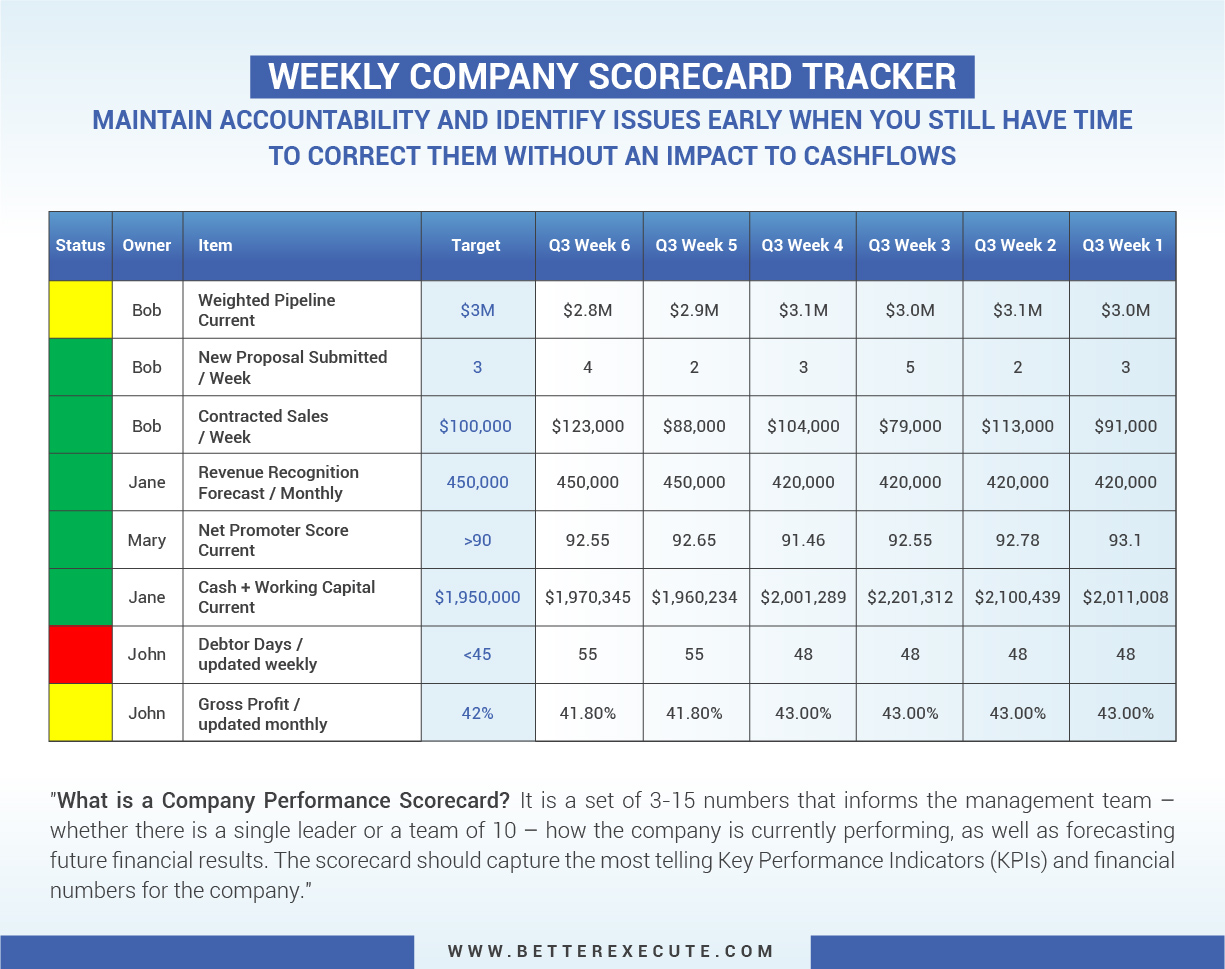Implementing a winning scorecard changes how businesses track crucial metrics by emphasizing strategic alignment and balanced perspectives across financial, customer, internal, and learning aspects. This approach helps organizations boost growth and improve operations by focusing on the right metrics, ensuring resources are used efficiently, and promoting cohesive teamwork aimed at shared goals.
Key Takeaways
- The Balanced Scorecard brings together multiple perspectives, fostering an integrated alignment of strategic objectives and actionable metrics.
- With a focus on financial, customer, internal process, and learning perspectives, this tool enables organizations to maintain profitability, meet customer needs, and drive ongoing improvement.
- Keeping strategic objectives in line with overall goals ensures collaboration and long-term success across all company levels.
- Choose and monitor Key Performance Indicators (KPIs) carefully to track progress and focus on impactful areas, aiding sustainable development and clarity.
- Effective communication and professional development empower teams, enhancing organizational alignment, which is crucial for successfully implementing scorecard strategies.
The Balanced Scorecard grants businesses a broad perspective on aligning strategic objectives with actionable metrics. By integrating this tool, organizations nurture a holistic approach to achieving their goals. Its primary strength lies in its ability to balance different perspectives—financial, customer, internal processes, and learning and growth—each contributing to strategic alignment.
The Financial Perspective
The financial perspective ensures your business maintains profitability and fiscal health. Meanwhile, the customer perspective emphasizes understanding and meeting customer needs, which is crucial for sustained success. Internal processes must be optimized for efficiency and quality, while the learning and growth perspective focuses on continuous improvement and innovation.
Benefits of the Balanced Scorecard
Here’s how the Balanced Scorecard can help your business:
- Improved Focus and Alignment: It aligns day-to-day work with long-term strategy, ensuring everyone pulls in the same direction.
- Enhanced Performance Feedback: Regular feedback loops help measure progress and highlight areas needing improvement.
- Strategic Resource Allocation: You can allocate resources effectively, ensuring that areas impacting strategy are prioritized.
By leveraging the Balanced Scorecard, businesses not only streamline operations but also drive growth through strategic clarity. Remember, success stems not just from setting goals, but from tracking the right metrics to achieve them. Organizations ready to adopt this transformative tool can benefit extensively from the services offered by Better Execute, where experts assist in implementing the Balanced Scorecard for optimal strategic success.
Establishing strategic objectives is crucial for any organization. They provide a clear, measurable direction that aligns with the company’s vision and mission. For example, a non-profit looking to assist homeless individuals in finding employment needs specific targets to gauge success. Such organizations might set a goal to increase employment placement by 30% over a year.
Aligning objectives with an overarching strategy ensures that every level of the company works toward common outcomes. Consider a tech firm aiming to enhance innovation; aligning its objective to double R&D investment with its vision underscores its commitment to progress.
It’s important to remember that strategic objectives must resonate with both internal goals and societal expectations. Diverse sectors, from healthcare to education, demonstrate the benefits of cohesive strategic alignment.
Developing and Choosing Key Performance Indicators (KPIs)
Key Performance Indicators (KPIs) play a crucial role in tracking progress aligned with strategic objectives. By zeroing in on the ‘vital few’ KPIs, businesses can ensure success across various areas, including financial metrics and the customer perspective. It’s essential to filter out excessive data and focus on indicators that truly matter.
When setting performance targets, it’s beneficial to consider examples such as vehicle compliance in Process Excellence. This helps identify the primary drivers behind each KPI. By concentrating on these drivers, companies can achieve clearer insights and more effective results.
To streamline your KPIs, consider factors like relevance, alignment with business goals, and data availability. Here’s a streamlined approach to choosing effective KPIs:
- Identify strategic objectives.
- Align KPIs with those objectives.
- Prioritize the most impactful KPIs.
- Set specific targets and review regularly.
With the right KPIs, businesses can unlock growth and ensure sustainable excellence.
Aligning and Empowering Your Team
Creating diverse teams is essential for effective scorecard implementation. These teams should blend individuals from various organizational levels, ensuring a mix of perspectives and expertise. With the right leadership, such as those dedicated to cultural alignment and process facilitation, these groups can drive tangible progress.
To help your team flourish, emphasize ongoing professional development. Continuous learning not only sharpens necessary skills but also aligns day-to-day actions with broader goals. Investing in education upskills your workforce and empowers them to contribute more effectively to your company’s success.
Consider Encouraging:
- Cross-training opportunities to enhance multidisciplinary understanding.
- Regular workshops to stay updated on industry developments.
- Coaching sessions to refine leadership capabilities.
Professional development like this fosters organizational alignment and strengthens leadership teams, ensuring everyone moves harmoniously towards shared objectives.
By empowering your team, you equip them with tools to navigate challenges and excel in their roles. As you focus on these initiatives, you’ll experience enhanced organizational alignment, pivotal for achieving sustainable growth.
The Role of Communication in Implementation
Effective communication serves as the cornerstone of successful scorecard implementation. Regular meetings, like weekly and monthly reviews, allow teams to sync on performance metrics and address any concerns promptly. Training sessions are vital for ensuring everyone understands the metrics, paving the way for informed discussions during performance reviews. These sessions not only clarify what each metric entails but also foster a culture of continuous learning.
Incorporate a management process that uses one-on-one meetings to track individual progress. This approach helps address specific issues while reinforcing mutual understanding and commitment. Clear communication enhances accountability and drives results, ensuring alignment across the organization. Such practices are essential for translating strategic objectives into actionable outcomes.
A well-crafted scorecard can significantly boost strategic alignment, enhance indicators, and improve overall performance. Data from Intangible Capital shows that businesses adopting a balanced scorecard saw a 20% increase in strategic alignment and better-established indicators. This clarity aids in reducing conflicts and enabling data-driven decision-making.
In both private and public sectors, scorecards have been linked with notable enhancements in accountability and efficiency. Organizations leveraging these tools report significant decision-making improvements, leading to smoother operations. Here’s why:
- Balanced Scorecard benefits: Helps visualize patterns and anticipate needs, leading to more informed actions.
- Data-driven decision-making: Provides realistic insights, supporting precise planning.
- Improving accountability: Encourages teams to set clear goals and work transparently to achieve them.
This strategic approach has set a benchmark for achieving excellence. Implement these practices to realize remarkable results.



















